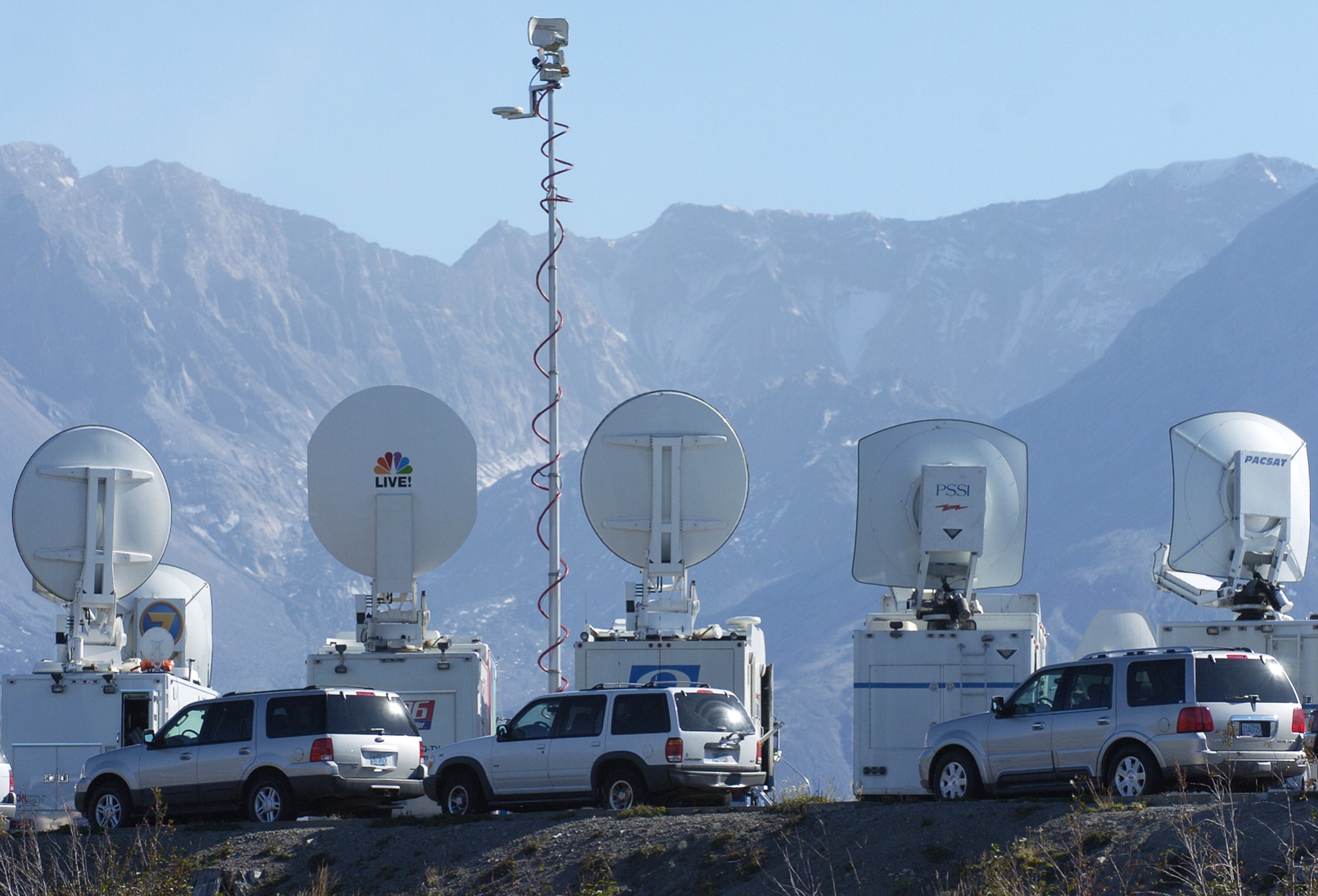Key events in the 2004-08 eruption of Mount St. Helens:
• Sept. 23, 2004: A swarm of tiny, shallow earthquakes beneath the 1980-86 lava dome begins at 2 a.m. The swarm increases in intensity, then declines within two days.
• Sept. 25: Larger, low-frequency earthquakes begin to occur, signaling the possibility of an eruption.
• Sept. 26: Cracks appear in glacier ice, indicating the intrusion of rising magma. The Cascades Volcano Observatory issues a "notice of volcanic unrest" and raises the aviation color code to yellow.
• Sept. 29-30: Seismicity accelerates; the CVO issues a Level 2 volcano advisory and raises the aviation color code to orange because of concern that explosions could affect air traffic. Scientists peg the chance of an eruption at 70 percent.
• Oct. 1: At 11:57 a.m., a 20-minute explosion sends an ash and vapor cloud about 2 kilometers into the air. The eruption is clearly visible from Vancouver and Portland. A tiny bit of ash falls in the metro area.
• Oct. 2: After continued seismic activity indicates magma movement or pressurization, scientists issue a Level 3 volcano alert and raise the aviation color code to red. Johnston Ridge Observatory and state Highway 504 are evacuated near the mountain.
• Oct. 6: After days of small explosions and steam and ash emissions, seismicity decreases. The volcano alert is lowered to Level 2, and the aviation color code is lowered to orange. But activity continues in the coming months as a rock "spine" grows inside the crater.
• Jan. 16, 2005: The first of two significant explosions occurs without giving off any warning signs to volcanologists.
• March 8: The second of two significant explosions occurs, again with little warning. A large ash cloud rises from the crater, and ash dustings are reported as far as 90 miles from the volcano.
• 2005 to 2008: Continued activity releases semi-solid lava and forms a dome-like mass in the crater. Gas emissions continue.
• January 2008: The eruption ends. The new lava dome measures 124 million cubic yards.
Sources: U.S. Geological Survey, Columbian archives




